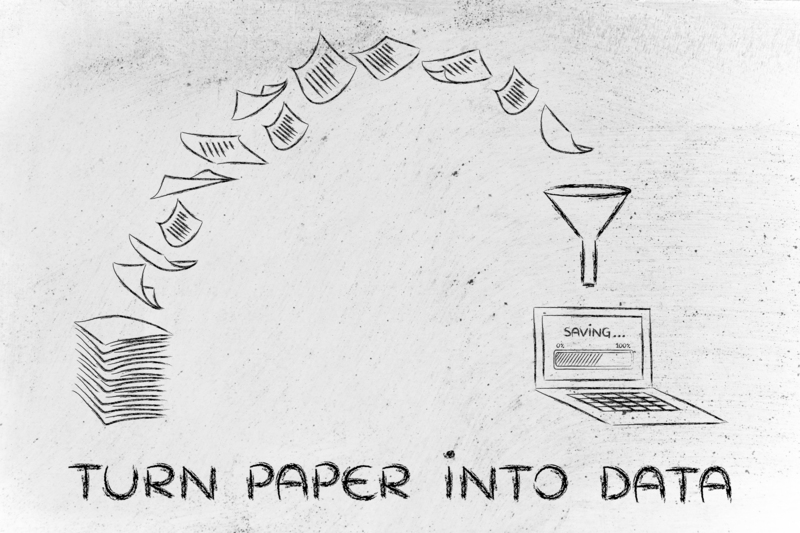The Path to Ending Microplastic Pollution for Good
Microplastic pollution is a crisis that affects our oceans, rivers, air, soil, wildlife, and even us humans. The tiny fragments--less than five millimeters in diameter--sneak their way through water systems, food chains, and even the very air we breathe. Tackling this invisible menace is among the most pressing environmental challenges of our generation. But is it possible to end microplastic pollution for good? This comprehensive guide explores the sources, impacts, and most importantly, solutions--both systemic and personal--that can pave the way towards a microplastic-free planet.
Understanding Microplastic Pollution
What Are Microplastics?
Microplastics are minuscule plastic particles, usually less than five millimeters in length, that result from the breakdown of larger plastics or are manufactured intentionally for use in various products. There are two main categories:
- Primary microplastics: These are intentionally created for commercial use, such as microbeads in cosmetics, exfoliants, or industrial abrasives.
- Secondary microplastics: These result from the degradation of larger plastic objects--bags, bottles, fishing gear--due to exposure to elements such as UV radiation, wind, and wave action.
Where Do Microplastics Come From?
Certain sources dominate the global flow of microplastic contamination. Some primary contributors include:
- Cosmetic and personal care products: Microbeads in facial scrubs, toothpaste, and cleansers.
- Textile fibers: Synthetic clothing (like polyester and nylon) releases microfibers during washing.
- Tire wear and tear: Tiny rubber and plastic particles are shed from vehicle tires onto roads, eventually washed into waterways.
- Paints and coatings: Marine paints and road markings degrade to release plastics.
- Fragmented plastic waste: Bags, bottles, and packaging slowly break down into millions of particles.

The Devastating Impacts of Microplastic Contamination
Environmental Consequences
Microplastics infiltrate every ecosystem. In aquatic environments, these pollutants are mistaken for food by fish, birds, and marine mammals, which can lead to starvation, poisoning, or death. Microplastic pollution in the oceans sabotages entire food chains, impacting biodiversity and fisheries that billions of people rely on.
Human Health Risks
Recent research shows microplastics in drinking water, sea salt, table fish, and even airborne dust. While full health implications are still being uncovered, scientists are gravely concerned about the long-term impacts, including:
- Chemical leaching: Microplastics can absorb and transport toxic chemicals and heavy metals.
- Bioaccumulation: Persistent exposure can lead to accumulations in human organs and tissue.
- Endocrine disruption: Certain additives in plastic (phthalates, bisphenols) are linked to hormonal and reproductive problems.
The path to stopping microplastic pollution must consider these risks comprehensively.
Global Response: Regulations and Industry Initiatives
Legislation to Ban and Reduce Microplastics
Recognizing the scale of the problem, governments across the globe are taking action:
- Ban on Microbeads: The US, UK, Canada, and several other countries have prohibited microbeads in rinse-off cosmetics and personal care products.
- EU Action Plan: The European Union has launched an action plan to reduce intentionally added microplastics by at least 30% by 2030.
- Textile Standards: New standards are emerging to limit microfiber release from synthetic clothing during manufacturing and washing.
Strong enforcement, global cooperation, and monitoring are critical to making these regulations effective in tackling microplastic contamination.
Industry Innovations
The corporate sector is also responding to the challenge:
- Green Chemistry: Many companies are developing biodegradable alternatives to conventional microplastics in products and packaging.
- Filtration Technology: Emerging appliances and industrial processes are being equipped with microfiber filters to keep plastics out of wastewater.
- Closed-loop recycling: Designing products for recyclability and zero waste is becoming a mainstream manufacturing benchmark.
Industry-wide responsibility is essential to permanently eliminate plastic micropollutants.
Promising Innovations and Solutions
Cutting-Edge Microplastic Cleanup Technologies
Besides prevention, removing existing microplastics is vital. Exciting solutions are on the horizon:
- Ocean Cleanup Devices: Nonprofit initiatives like The Ocean Cleanup deploy massive floating barriers to collect plastic waste, including microplastics, from the world's largest garbage patches.
- Magnetic Nanoparticles: Scientists are experimenting with special magnetic particles to attract and remove microplastics from water.
- Biological Filters: Specially engineered sponges and bacteria are being trialed for their ability to absorb or degrade plastic micropollutants.
Scaling these innovations could make a meaningful difference in reducing current microplastic pollution levels.
Transitioning to Circular and Sustainable Materials
To end microplastics for good, we must break up with disposable plastics and invent sustainable alternatives:
- Natural Fibers: Encouraging the use of cotton, hemp, or bamboo in place of synthetic textiles.
- Bioplastics: Substituting fossil-fuel-based plastics with compostable or biodegradable plant-based materials.
- Zero-Waste Product Design: Products designed for durability, reuse, and ease of recycling help minimize secondary microplastic creation.
Such transitions are the foundation for a future free from microplastic pollution.
Everyday Actions: What Can Individuals Do?
Ending microplastic pollution is not just the work of governments, scientists, and industry; each one of us plays a role in driving systemic change. Here's how consumers and citizens can take part:
Reduce Use of Single-Use Plastics
- Opt for reusable bags, bottles, cutlery, and containers.
- Buy in bulk to minimize packaging waste.
- Support businesses that prioritize sustainable packaging.
Select Natural and Biodegradable Products
- Avoid cosmetics and personal care items containing polyethylene, polypropylene, or "microbeads" (check ingredient labels).
- Choose clothing made from natural fibers when possible.
- Select cleaning products that are certified microplastic-free.
Take Care with Synthetic Textiles
- Launder full loads to reduce fiber loss and use colder, gentler wash cycles.
- Consider special laundry bags (like Guppyfriend) or filters to capture microfibers during washing.
- Air dry clothes to minimize friction and shedding.
Advocate and Educate
- Participate in local clean-up events to keep plastics from entering waterways.
- Share knowledge about microplastic pollution solutions via social media and community groups.
- Encourage local officials to support relevant legislation and to invest in better plastic waste management infrastructure.
Be a Smart Consumer
- Seek out and support products and companies with robust environmental policies.
- Demand transparency: Call for clear labeling about microplastic content in textiles and consumer goods.
- Invest in long-lasting, quality products to reduce overall plastic demand.

The Road Ahead: Building a Microplastic-Free Future
Breaking the Plastic Habit
Microplastic pollution didn't happen overnight, and ending it will require sustained, multipronged action. Our current "throwaway culture" relies heavily on cheap, disposable plastic--itself a product of decades of convenience-first mindset. To reverse the tide, we need:
- Systemic change: Bold policy, innovation, and enforcement to phase out unnecessary plastics and transition to alternative systems.
- Corporate responsibility: Producers must redesign products with sustainability in mind and support take-back, reuse, and recycling initiatives.
- Public engagement: Citizens must demand better choices and be willing to shift long-standing habits.
With collaborative, multi-level action, ending microplastic pollution for good can move from aspiration to reality.
Empowering the Next Generation
Education is a powerful weapon against microplastic proliferation. Including microplastic and plastic pollution topics in school curricula, investing in youth-led environmental movements, and promoting hands-on science (like citizen water-testing) can inspire tomorrow's changemakers.
Role of Research and Innovation
Innovative science will be at the heart of the ultimate solution--from developing advanced biodegradable plastics and microplastic filters to creating scalable methods for cleaning up what's already out there. Support for this research, through public funding and private investment, is critical.
Conclusion: A Life Beyond Microplastics
Confronting the microplastic challenge head-on is not optional--it's essential for the health of our planet, our ecosystems, and ourselves.
We know the sources, we know the impacts, and for the first time, we have a growing arsenal of solutions. By embracing innovation, supporting robust policies, demanding industry action, and making responsible daily choices, we can truly chart the path to eliminating microplastic pollution forever.
The journey to a microplastic-free future starts with you, with us, and with the choices we make every single day. Let us choose to be part of the solution. Our world--and our descendants--depend on it.
Further Reading and Resources
- UN Environment Programme: Beat Plastic Pollution
- National Geographic: Plastic Pollution
- The Ocean Cleanup Project
- Plastic Pollution Coalition
Together, we can end microplastic pollution for good.